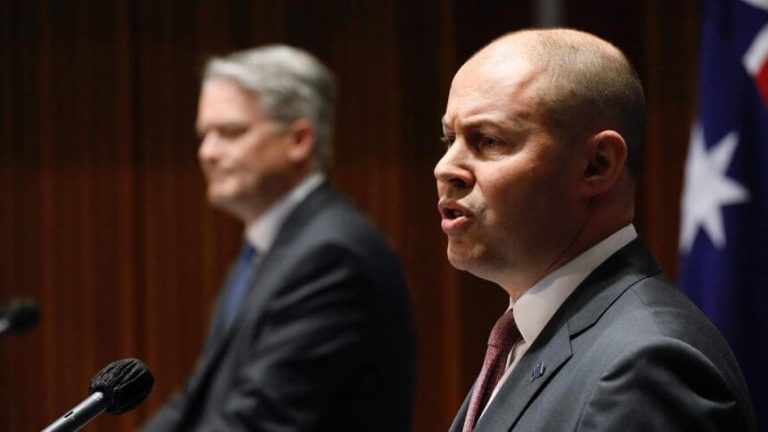Treasurer Josh Frydenberg addressed the Australian Strategic Forum 2020 yesterday concerning the rising strategic importance and competition in the Indo-Pacific: As has been well documented over recent years, global power and economic weight is shifting towards our region. On the economic front, the region is very well-placed to emerge from this current crisis even stronger.
The region has been relatively successful in containing COVID-19, compared to many other regions around the world. China, South Korea, Vietnam and Taiwan, together with Australia and New Zealand, have been effective in limiting transmission whilst keeping their economies strong.
And some countries in our region remain largely COVID-free, including many of the Pacific islands to our north.
The Chinese economy has also rebounded strongly. The sharp contraction in GDP that China saw in the March quarter was completely recovered in the June quarter of this year.
Indeed, China’s rebound in real GDP in the June quarter was equal to the total size of Belgium’s economy in 2019. And this recovery is expected to continue in 2021. In the Budget, Treasury forecast Chinese GDP to grow by a further 8 per cent.
These two factors – our relative success on the health front and China’s strong recovery – will further enhance our region’s prospects as we move into recovery.
And Australia will benefit from this.
A stronger region will help boost our own recovery from COVID-19. Our major trading partners are forecast to grow by 5¾ per cent in 2021, compared to world growth of only 5 per cent.
But even beyond the immediate recovery, the prosperity and strategic weight of our region will continue to grow. This goes well beyond just a China story.
It is also tied to the continued, longer term, rise of India, Indonesia and Southeast Asia. India represented 7.1 per cent of world GDP in 2019, compared with just 4.0 per cent in the year 2000.
And the ASEAN-5 countries represented 5.7 per cent of world GDP in 2019 compared with 4.4 per cent in the year 2000.
These growth engines of the future – with relatively young and growing populations – will continue to reshape the region and create important new opportunities for Australia.
That is why the Morrison Government is deepening our economic partnerships, to take advantage of these new opportunities. Two-way trade and investment between Australia and India doubled between 2014 and 2019.
And our two-way trade with ASEAN exceeded $120 billion in 2018-19 – making the region collectively our second largest trade partner.
This year, Australia has elevated our relationship with India to a Comprehensive Strategic Partnership and our Comprehensive Economic Partnership Agreement with Indonesia has taken effect.
And just over the weekend, Australia signed the Regional Comprehensive Economic Partnership (RCEP) Agreement between Australia and 14 other Indo-Pacific countries.
RCEP is the world’s largest free trade agreement with its members accounting for nearly 30 per cent of global GDP. This builds on the Governments ongoing success in securing trade agreements and, importantly, it signifies that our region remains committed to the principles of open trade.
Since coming to office our two way trade covered by free trade agreements has increased from 26 per cent to over 70 per cent with the goal of reaching 90 per cent in coming years.
We have secured agreements with Japan, Korea, China, and the 11 nation Trans-Pacific Partnership. This will ensure that Australia is well placed to reap the full benefits of a strong and growing Indo-Pacific region, now and into the future. Our deepening partnerships are more than just a trade story. We are working to ensure that all countries in our regions can recover strongly from COVID-19.
That is why we have recently committed $500 million to help ensure that the countries of the Pacific and Timor-Leste are able to achieve full immunisation coverage, and make a significant contribution toward meeting the needs of Southeast Asia.
And just last week, I signed with my Indonesian counterpart, Dr Sri Mulyani, a A$1.5 billion bilateral loan from Australia to Indonesia to support Indonesia’s ongoing economic and health response to COVID‑19.
I would now like to turn to the changing strategic landscape in our region, which has broader implications for the world.
The post-WWII global architecture, based on a system of well-established rules and norms, has served our region well. It has underpinned the economic success of countries like China, and helped lift millions out of poverty.
But the economic weight of the world has now changed.
And not surprisingly, our current institutions, rules and norms are coming under increasing pressure. We see this most clearly through the lens of increased strategic competition between the US and China.
This has seen the US shift from viewing China as a strategic partner to a strategic competitor. This is creating a more complex and uncertain environment across the region including in trade, and countries like Australia are not immune.
But we stand ready to engage with the Chinese Government in respectful, mutually beneficial dialogue. Both of our countries have benefitted hugely from our growing trade relationship. Without this, we both lose.
The fact that we have different political systems and different values means we will not always agree.
That is not new.
But despite our differences, we are committed to maintaining a strong and productive relationship.





